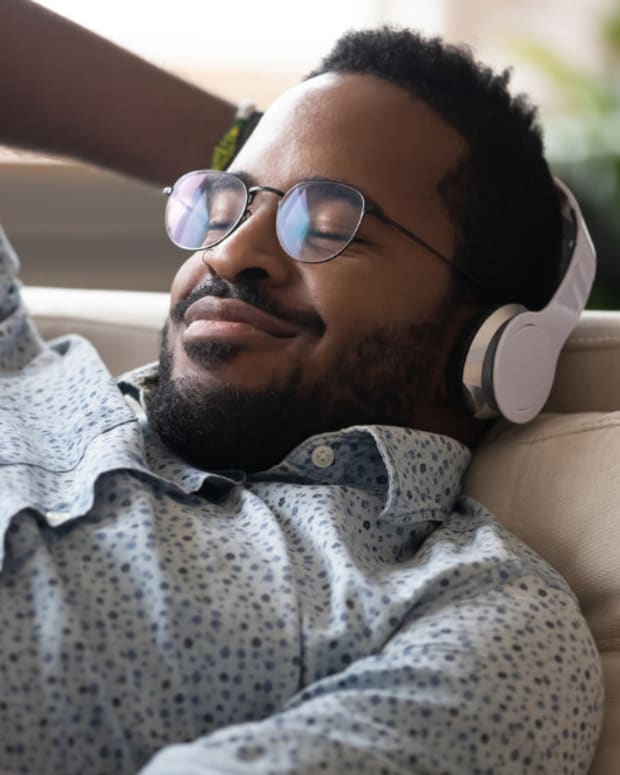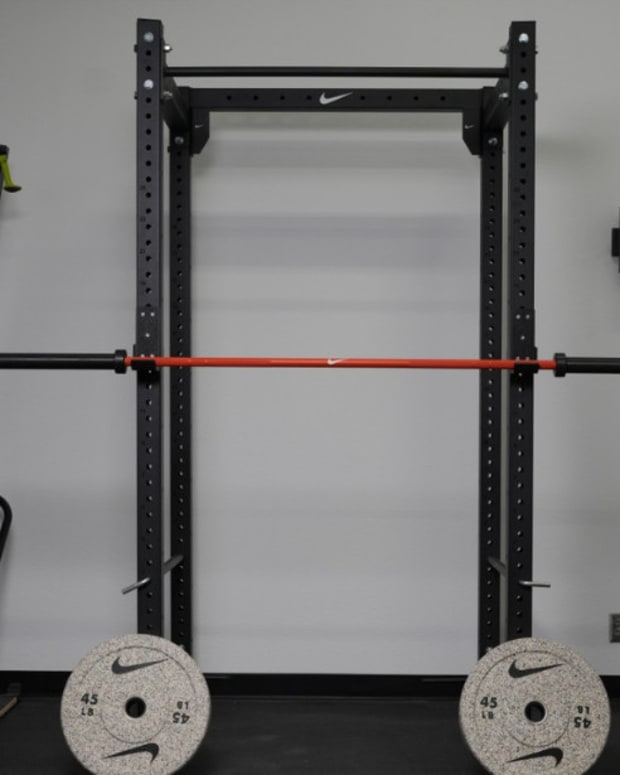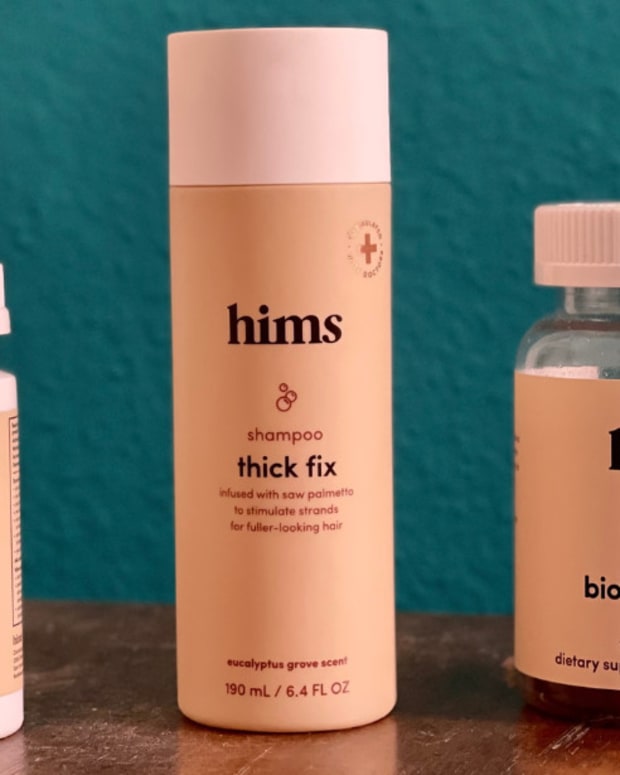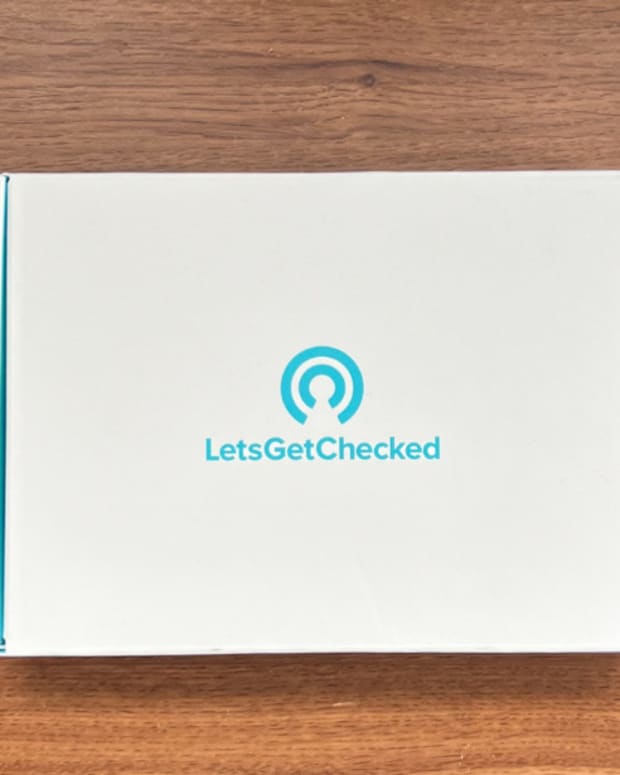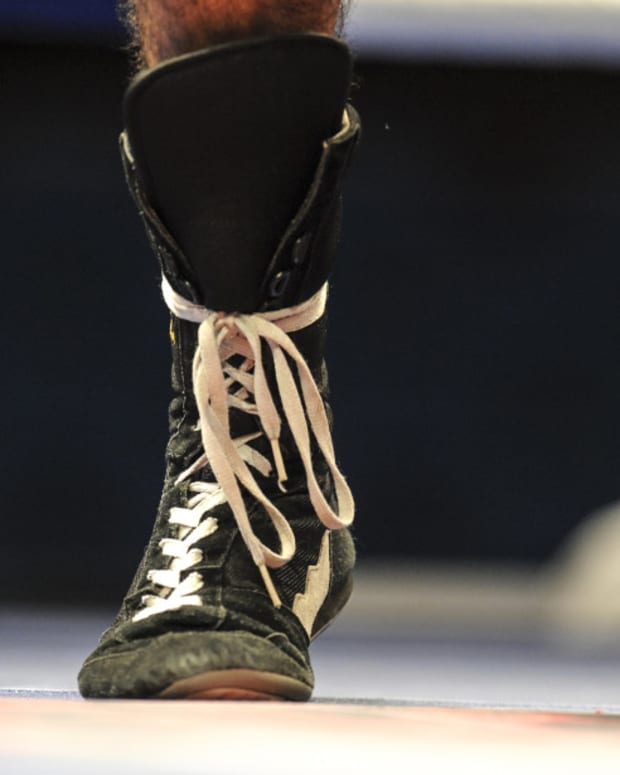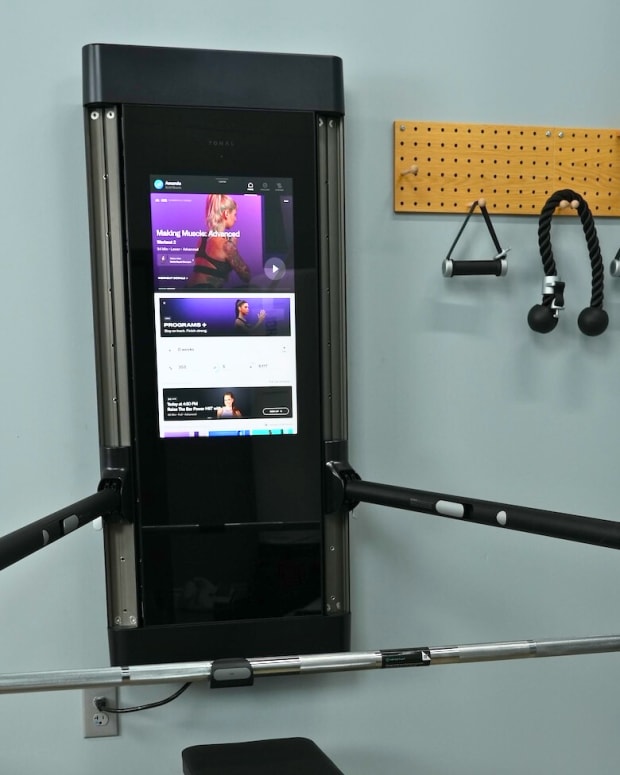The products featured in this article have been independently reviewed. When you buy something through the retail links on this page, we may earn commission at no cost to you, the reader. Sports Illustrated editorial staff are not involved in the creation of this content. Learn more here.
Here’s what a professional fitness writer thinks about today’s most popular wearables and fitness trackers
The buzz from my watch tells me my heart rate has jumped from resting to fat burn. A few minutes later my watch vibrates again, this time twice in quick succession, when the heart rate tracking function in my Fitbit Charge 4 reports I have moved from fat burn to cardio. Like a pat on the back from a friend or "Way to go!" from a coach, those vibrations serve as reassurance that what I'm doing—pushing my body—has value. I will be better at the end of this day than I was at the beginning of it and the information contained in the activity tracker on my wrist will prove it.
That, more than anything, reveals the value in wearable devices: They show you that you are making progress.
There are many benefits to wearable technology, not the least of which is to accurately monitor fitness levels. And if you're going to put in the work, you need a device that can stand up to the rigors of your workout. So the question is, which wearable best suits your lifestyle? That's what our list of best fitness trackers aims to do.
We'll focus on three keys: price, quality and the specific metric or metrics you want to measure. One thing is clear: Not all smartwatches, activity trackers and wearables are created equal in any of those areas.
Our picks for the best fitness trackers:
- Best Overall: Whoop Strap 4.0
- Runner-Up: Fitbit Charge 4
- Best Tracker for Athletes: Garmin Vivosmart 4
- Best Budget Fitness Tracker: Xiaomi Mi Smart Band 6
- Best Water-Resistant Fitness Tracker: Apple Watch Series 7
Best Overall: Whoop Strap 4.0
The Whoop Strap 4.0 earned the top spot on this list thanks to its impressive ability to collect data in a sleek design paired with an intuitive companion app. The latest version provides blood oxygen levels, skin temperature, heart rate tracking and more. When those numbers are combined with sleep tracking data, Whoop Strap 4.0 generates a recovery score and links that number with a corresponding color code. Green means you can/should work out rigorously that day; yellow means engage in a moderate workout and red means take a rest day.
I'm wishy-washy about readiness scores. I sometimes find them discouraging. My ego doesn't want to let a machine tell me if I'm ready for whatever challenge lies ahead of me. On the other hand, I'm prone to burnout and for athletes who tend to over-train, it's nice to have someone say, "Whoa there, Champ, take it easy today," even if that someone is a wearable device.
Whoop has decent, but not extraordinary, battery life (it’s in the five-day range). What makes it stand out is the battery pack. You attach that to the strap and it charges the device while you're wearing it.
One important point: Whoop is a wearable, not a watch. There is no touchscreen and it won't tell you the time, or anything else for that matter. All of the information comes to you via the companion app. With that in mind, if you're looking for one of the best fitness wearables, not a smart watch, the Whoop should be high on your list.
Runner-Up: Fitbit Charge 4
I personally use the Fitbit Charge 4, which is why it earned the runner-up spot. The stand-out feature of this device is the battery life. It stretches several days and lasts far longer when it is not paired with the GPS on my Android phone. That's true for basically every product—the more you track, the more you need to charge it. The long battery life has been especially valuable when I've taken long bike trips and mountain hikes (after which I use data collected by the altimeter to brag about how high I climbed).
One feature I don't love is the touchscreen. It's hard if not impossible to read in even moderate sunlight.
Fitbit premium offers a more granular look at data, including a readiness score, more robust sleep numbers and insight into stress. But I have to confess I am unwilling to pay a subscription fee ($9.99 per month/$79.99 per year) to get information about myself.
Best Fitness Tracker for Athletes: Garmin Vivosmart 4
Athletes need actionable information—and the Garmin Vivosmart provides it, all in a watch that looks that nice and works well. The range of data the watch collects is impressive—everything from calories burned, heart rate tracking and sleep information to blood oxygen saturation, hydration, menstrual cycle and floors climbed.
Related Post: The 7 Best Garmin Watch Models
The companion app gives you access to challenges and competitions, too, so you can see how others in the Garmin community are doing and try to top their efforts. Garmin's sleep tracking function monitors how much time you spend in each sleep stage. It also tracks how much you move during the night, a key metric in determining sleep quality. Overall, it's an excellent choice for athletes or fitness-minded people.
Best Budget Fitness Tracker: Xiaomi Mi Smart Band 6
Though the Xiaomi Mi Smart Band 6 is definitely a more cost-effective option, it will do a good job at the basics. It features heart rate tracking, a pedometer and calorie counts. The battery life is good, depending, of course, on what (and how much) you track on a day-to-day basis.
The amoled display—a frequent source of criticism in other watches—draws praise from users. Compared to previous models, the size of the watch face has grown (by up to 50%). This makes interacting with the touchscreen much easier. And the brightly colored bands—orange, yellow and green—contrast with other brands, which offer largely muted colors. Overall, a solid choice given the price point.
Best Water-Resistant Fitness Tracker: Apple Watch Series 7
Let's first make it clear what water-resistant means and what it doesn't mean. When it comes to wearable devices, water-resistant does not mean you can use it while scuba diving. You would be in the water too long and probably go too deep. Every Apple Watch Series from 2 on up is rated for up to 50 meters deep (as are many others).
You can use it when playing in the pool with your kids, training for/participating in a triathlon and showering/doing the dishes/washing your hands (be careful of harsh soaps in those situations). If you swim in saltwater, be sure to rinse it after.
Other than the water-resistant factor, the Apple Watch stands out for its trademark sleek design in five aluminum colors and ability to sync with your iPhone. Many users love the activity tracker that encourages you to “close your rings” each day by meeting certain objectives, such as standing every hour or getting 30 minutes of exercise. It’s a function—and stylish—wearable option (albeit a pricier one).
Why Did I Buy a Fitness Tracker?
I bought my fitness watch because a friend of mine got tired of me asking how far we had gone/how far we had left on long bike rides, hikes, canoe trips, etc. So now I don't have to ask, I just look at my touchscreen.
The new me knows where he is, where he's been and how long until he gets where he's going. I pay close attention to my VO2 Max (a measure of overall fitness) and active zone minutes and I pour over my sleep tracking numbers every morning. Overall, I am healthier, in better shape and more rested than I was before I got the watch. I do the work, the watch tabulates and proves it.
Related Post: The Best Running Watches for Long Distance, Trail Running and More
What I Wanted in a Fitness Tracker
Before I chose mine and in preparing this review, I spent a lot of time reading Amazon and other reviews and talking to friends about their watches. I quickly discovered that people who love fitness watches are like CrossFitters and Keto fanatics: They love to talk about them and will tell you all about theirs if you ask (and even if you don't). If you don't believe me, ask someone with an Apple Watch Series if he or she closed their rings that day.
Each individual is different and comes to this market with different wants and needs. Maybe you're a runner who loves to match your cadence with your Spotify playlist (check out Garmin Forerunner). Maybe you're a triathlete so you need great swim tracking (Apple Watch Series). Maybe you're a mall walker so you need a pedometer and Fitbit Pay to buy coffee after (Fitbit).
Just as each individual is different, each activity tracker is different, so be sure to get one that focuses on what's important to you.
How Do I Choose a Fitness Tracker?
There are important questions to ask yourself about what, exactly, you want this gadget to do. When I first started using mine, I dutifully programmed it to record whatever I was doing in that particular workout. I thought it was important to distinguish between multisport events, whether I was using it to chart my speed in a run, gauge my distance on a bike ride, whatever. But I have mostly stopped doing that because too often I either forgot to turn it on or I forgot to turn it off and that drains the battery and throws all the numbers off, because if you're still recording as you're driving home, it will look like you sprinted down the interstate.
After a year plus of using it, I've discovered I'm more interested in my daily activity than I am in the specific details of any particular workout. I shoot for 10,000 steps a day and 2,600 calories burned and if I hit one, I always hit the other.
A friend of mine has an Apple Watch Series. Like me, he sometimes forgets to start it. He finds it incredibly useful that the watch buzzes him when the heart rate tracker reports an increase in beats per minute and asks if he wants to start recording. Does that make it the best smartwatch on the market? No, but it makes it the best smartwatch for him and that's what's important.
Accuracy
I spent a summer using multiple wearable devices in an attempt to hack my health. The heart rate tracking was pretty consistent—the three devices I used gave me mostly the same information. But the two devices I used for sleep tracking diverged widely.
I described the results to an expert with decades of experience and his reaction was as blunt as it was telling: They're both wrong. The only way to get truly reliable data on how much time you spend asleep and in each sleep stage is by sleeping in a lab. That's not to say that what you get from a watch is worthless—indeed, I changed my life for the better based on sleep data from my devices—but it is to say that these devices are fallible.
Another commonly cited example: Some watches will tell you to get up and move if you sit too long. But they don't know if you're sitting at your desk, where that advice would be helpful or at a conference, where it wouldn't be. One device told me (paraphrasing) to get off my butt and do something while I was in the middle of an eight-hour car ride. That was annoying.
As another example, stress is difficult to quantify. The metrics of stress—heightened in respiration, changes in heart rate variability, increased body temperature—are often the same changes prompted by laughter.
Fitness Tracking and Activity Tracking
I see a slight difference between the two. I write often about fitness and adventure. I keep myself in "just-in-case" shape, as in, just in case I sell a story about doing a Tough Mudder, a long bike ride or a canoe trip, I can be reasonably sure I can do it. That means my fitness goals are vague. That's why I favor fitness tracking over activity tracking. I don't want to be prepared for one thing, I want to be prepared for anything. To that end, I keep close tabs on my VO2 Max score as a way of gauging my overall fitness. My Fitbit calculates the score based on my age, weight, resting heart rate and workout history.
Sleep Tracking
I struggled with poor sleep for years. Now I closely study my sleep tracking numbers. Every morning, the Fitbit app shows me when I was awake, when I was asleep and how much time I spent in each sleep stage (deep, light and REM). I regularly check my spo2 sensor, resting heart rate and skin temperature. By scouring those numbers, I learned what was happening and I changed some of my nighttime routines to try to sleep better.
Within a relatively short amount of time—a couple of weeks—I made tremendous progress, adding 40 minutes per night to my sleep total. I still have occasional bad nights of sleep. But based on studying my own behavior, I can usually pinpoint why.
Related Post: The Best Sleep Tracking Apps
Style and Form
I'm in an outdoor fitness group and members of the group endlessly dissect the information our fitness watches give us. We debate what works and what doesn't, which numbers are important and which aren't, etc. We don't talk about aesthetics much, but don't sleep on how your fitness watch looks. Style doesn't have to be an afterthought.
One of my buddies loves what his Apple Watch Series tells him about his workouts nearly as much as how it looks: "I like that I can change the band out," he says. "Sometimes it is very fitness oriented, but I can also add a band that looks fancy."
Pro Tips
- Play with your watch before you use it and, if possible, before you buy it. As I mentioned, my touchscreen doesn't work well or at least not as well as what I'm used to after years of using Androids, iPhones, tablets, etc.
- If your phone has a bed-time function, set it and follow it. Your watch can help you consistently go to bed and wake up at the same time.
- Check the fine print. You don't want to get a device, charge it up, get ready to use it and find out there's an issue with whatever device you want to pair it with.
Fitness Tracker FAQs
What's the difference between a fitness tracker and a smart watch?
A fitness tracker is used to track data related to your health and fitness. It tracks information like heart rate, steps walked, calories burned and hours slept. A smartwatch usually does everything a fitness tracker does, plus it can run apps, play music, send and receive texts, and it includes a speaker and microphone for phone calls.
Is it worth investing in a fitness tracker?
A fitness tracker is an effective tool to track health and exercise data by simply wearing a device. And according to John Hopkins Medicine, wearing a fitness tracker can improve your heart health by increasing your daily steps by over a mile.
Do you need to carry a phone with a fitness tracker?
No, many fitness trackers can be used without smartphones. It's helpful to have a smartphone, tablet or laptop that enables you to sync your data on your fitness tracker app or account, but you don't need it present to use the tracker.
Prices are accurate and items in stock at time of publishing.








